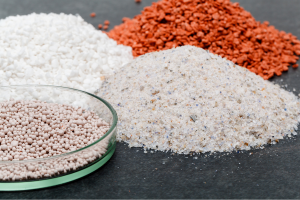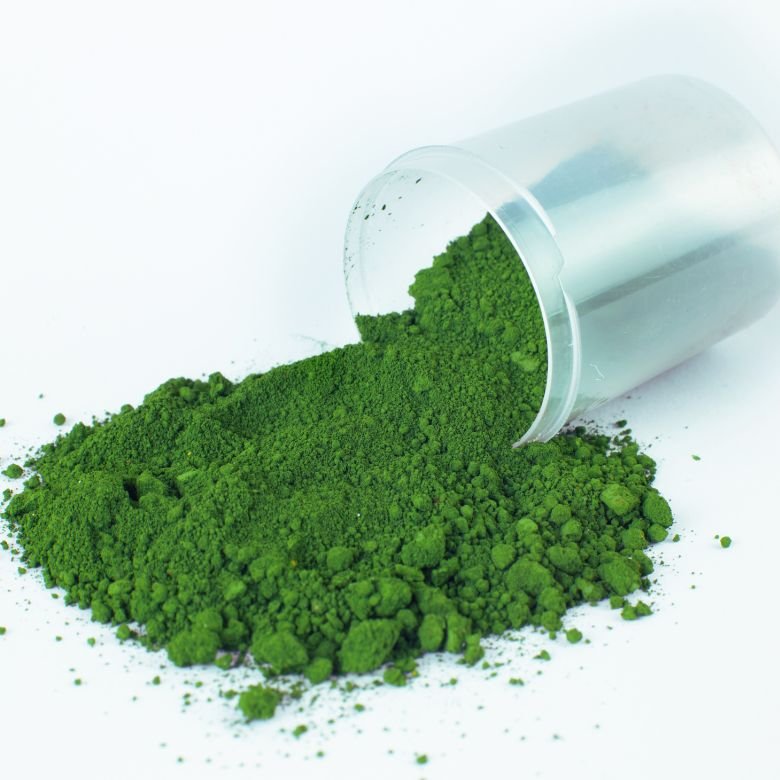This is a group of inorganic compounds formed by the combination of various elements with oxygen. Their general formula is XnOm, where "X" is any element, "O" is oxygen, always in the second oxidation state, and the letters "n,m" in the lower index are coefficients. Examples of oxides: water H2O, potassium oxide K2O, aluminium oxide Al2O3, calcium oxide CaO and carbon (II) monoxide CO.

Classification of oxides
Oxides can be classified into several categories. The most general classification is the distinction between metal oxides, e.g. lithium oxide, magnesium oxide, aluminium oxide, iron oxide, and non-metal oxides, including carbon oxide, nitrogen oxide, sulphur oxide and chlorine oxide.Another criterion is the classification according to their physical state. Almost all metal oxides and some non-metals (SiO2, P4O10) are solids. Water, sulphur (VI) oxide, and manganese (VII) oxide are liquids. Non-metal oxides such as CO, CO2, SO2, NO i NO2 are gases. Oxides can also be classified according to the type of bonds ocurring in them. Magnesium oxide MgO, calcium oxide CaO, or sodium oxide Na2O contain O2- ions and ionic bonds, hence their name – ionic oxides. Another group are covalent oxides, e.g. carbon (II) monoxide CO, nitric (II) oxide NO or sulphur (IV) oxide SO2, in which the bond between the oxygen atom and the element has the form of a polar covalent bond.
The chemical character of oxides
For chemists, the most interesting classification is based on the chemical nature of oxides. There are four main categories of oxides – acidic, basic, neutral and amphoteric.
- Acidic oxides, sometimes also called acid anhydrides, are distinguished by the fact that they react with alkalis with the formation of salt. A significant part of acidic oxides form appropriate solutions of oxyacids after dissolution in water. This applies to, e.g., sulphur (IV) oxide, which when dissolved in water produces sulphuric (IV) acid, and to chromium (VI) oxide which dissolves to chromic (VI) acid:
SO2 + H2O → H2SO3
CrO3 + H2O → H2CrO4
There is a small group of acidic oxides that are insoluble in water.However, they are soluble in solutions of strong alkalis, e.g. silicon (IV) oxide SiO2, molybdenum (VI) oxide MoO3, and tungsten (VI) oxide WO3. Their reactions with alkalis confirm their acidic character:
SiO2 + 2NaOH → Na2SiO3 + H2O
MoO3 + 2KOH → K2MoO4 + H2O
WO3 + 2NaOH → Na2WO4 + H2O
As a rule, acidic oxides are non-metal oxides and metal oxides at their highest possible oxidation states. If a given element forms several oxides at different oxidation states, as for example chromium, the acidic properties of its oxides increase with the increase of its oxidation state:
- chromium (II) CrO oxide is alkalic,
- chromium (III) oxide Cr2O3 has amphoteric properties,
- chromium (VI) oxide CrO3 is acidic.

- Alkalic oxides are those compounds of oxygen with metals that react with acids to give products in the form of the corresponding salts. Some of them, i.e. oxides of elements from the first and second group of the periodic table, excluding beryllium, are also characterized by a reaction with water resulting in the formation of alkalic hydroxides. It occurs, e.g., during the reaction of sodium oxide, lithium oxide and barium oxide with water:
Na2O + H2O → 2NaOH
Li2O + H2O → 2LiOH
BaO + H2O → Ba(OH)2
There are also alkalic oxides that do not dissolve in water but only in acid solutions. These include, e.g., manganese (II) oxide and iron (II) oxide:
MnO + H2SO4 → MnSO4 + H2O
FeO + 2HCl → FeCl2 + H2O
- Neutral oxides are the least reactive group of oxides. They do not react with either acids or alkalis.They are also insoluble in water. Examples of this group of oxides are carbon (II) monoxide CO and nitric (II) oxide NO.
- Amphoteric oxides are the complete opposite of neutral oxides and are both acidic and alkalic at the same time. This means that they react with both strong alkalis and acids. The products of these reactions are always salts, and the element that is initially combined with oxygen is transformed into an appropriate cation or anion of the acid residue. The only similarity to neutral oxides is their poor solubility in water. Examples of amphoteric oxides are: beryllium oxide BeO, aluminum oxide Al2O3, chromium (III) oxide, tin (II) oxide SnO, lead (II) oxide PbO, and zinc oxide ZnO. By reacting with aqueous solutions of strong alkalis, e.g. with an aqueous solution of sodium hydroxide, they form complex salts. In their acid residues, atoms or ions of the metal, which is derived from the oxide, are present in complexes with an appropriate number of hydroxyl groups. Their number depends on the coordination number of the given element.For example, atoms derived from MO (M – metal) oxides, such as beryllium oxide BeO, have the coordination number 4. Atoms derived from M2O3 type oxides, e.g. Al2O3, can have two different coordination numbers, and depending on the reaction conditions it is 4 or 6. Example reactions of amphoteric oxides:
BeO + 2HCl → BeCl2 + H2O
BeO + 2NaOH + H2O → Na2[Be(OH)4] sodium tetrahydroxy zincate
Al2O3 + 6HCl → 2AlCl3 + 3H2O
Al2O3 + 2KOH + 3H2O → 2K[Al(OH)4] potassium tetrahydroxyaluminate
Al2O3 + 6NaOH + 3H2O → 2Na3[Al(OH)6] sodium hexahydroxyaluminate
Some oxides, such as zinc oxide and manganese (IV) oxide, have quite specific amphoteric properties. The latter, neither under normal nor standard conditions, does not react with alkalis. Both, on the other hand, react with them by fusing with solid alkalis, e.g.:


Obtaining oxides
- Direct synthesis of elements:
a) synthesis of sulphur atoms and oxygen atoms with the formation of sulphur (IV) oxide
S + O → SO2
b) synthesis of magnesium atoms and oxygen atoms with the formation of magnesium oxide
2Mg + O2 → 2MgO
c) synthesis of carbon atoms and oxygen atoms with the formation of carbon (IV) monoxide
C + O2 → CO2 - Thermal decomposition of salts, hydroxides and oxides:
a) decomposition of calcium carbonate into calcium oxide and carbon (IV) monoxide
CaCO3 → CaO + CO2
b) decomposition of copper (II) hydroxide into copper (II) oxide and water
Cu(OH)2 → CuO + H2O
c) decomposition of manganese (IV) oxide into manganese (III) oxide and oxygen
4MnO2 → 2Mn2O3 + O2 - Oxidation of oxides at lower oxidation states, with an increase in their valence:
a) oxidation of sulphur (IV) oxide to sulphur (VI) oxide
2SO2 + O2 → 2SO3
b) oxidation of nitric (II) oxide to nitric (IV) oxide
2NO + O2 → 2NO2
c) oxidation of carbon (II) monoxide to carbon (IV) monoxide (IV)
2CO + O2 → 2CO2
- Reduction of oxides at higher oxidation states, with a decrease in their valence:
a) reduction of carbon (IV) monoxide to carbon (II) monoxide (II)
CO2 + C → 2CO
b) reduction of tin (II) oxide to tin (I) oxide
2SnO + O2 → 2SnO2 - Combustion of organic compounds:
a) combustion of methane in oxygen with the formation of carbon (IV) monoxide and water
CH4 + 2O2 → CO2 + 2H2O
b) combustion of ammonia in oxygen to obtain nitric (II) oxide and water
4NH3 + 5O2 → 4NO + 6H2O - Reaction of unstable oxyacids:
a) decomposition of carbonic (IV) acid into carbon (IV) monoxide and water:
H2CO3 → CO2 + H2O
b) decomposition of sulphuric (IV) acid into sulphur (IV) oxide and water:
H2SO3 → SO2 + H2O
